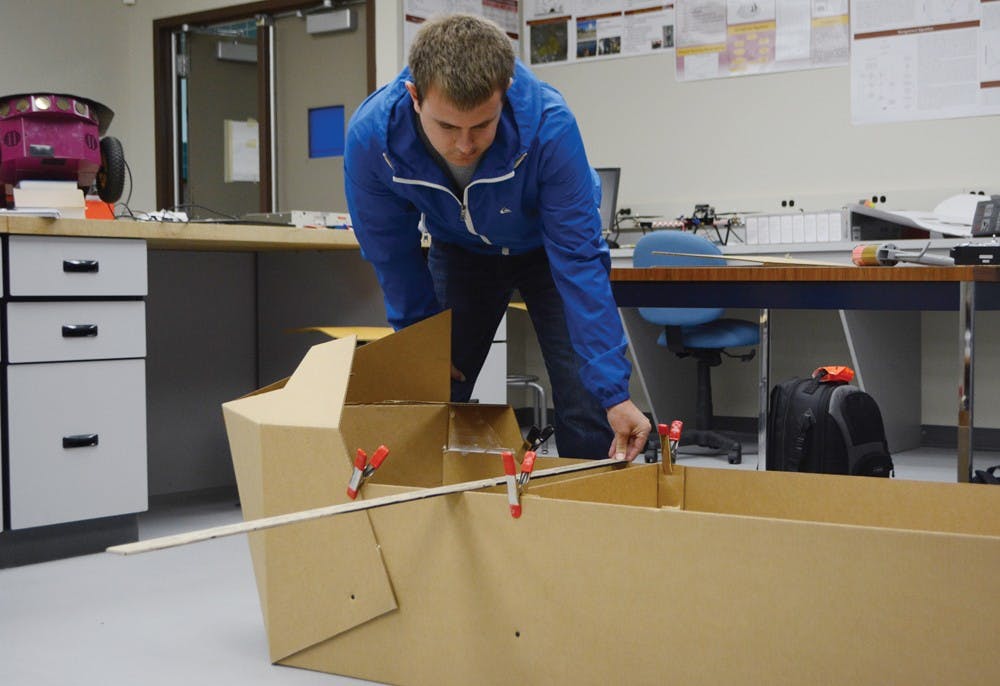Students engineer cardboard fleet for boat race

Armed with cardboard, duct tape, liquid nails and a tight budget, students in the school of engineering has been preparing for the 17th annual Central Michigan University Cardboard Boat Race.
Part of course work in the introduction to engineering class offered by the College of Science and Technology, the project puts students into teams of three to race across the Rose Ponds. The race, around three to four football fields in length, is timed and done in several heats and timed.
"It has grown in number a lot as the EGR120 course has grown, especially in the last 8 years," said mechanical engineering professor Brian DeJong. "It gives us good publicity. Because we run it right before the Homecoming game, we get a lot of spectators to cheer on the teams that make it, and laugh with the teams that sink."
Teams have to write a full report on the event which what include each group's mathematic calculations of the waterline, the craft's center-of-gravity, power, and discussions about design and drag-reduction. They are graded on how well their boat is built and how far it makes across the Rose Ponds before sinking.
Students get extra credit for spending under-budget and full credit for making it across the ponds.
DeJong said on average 60 percent of the boats make it, usually the others sink from leaks or poor structural integrity. Though DeJong was hesitant to give away the secret to success, he did say smaller boats do well, especially if they are strong and well-sealed.
This year there are 34 boats from the EGR 120 class, but usually only about 10 open competition boats come, made mostly by student groups in the college.
Clare junior Kyle Eggenberger and his partner, Canton junior Blaine Root, have been participating for three years as part of team-building exercises with the Institute of Electrical and Electronics Engineers association. In that time, they have learned valuable lessons, like keeping the sides low to prevent sore paddle-arms and making sure they account for the water-level.
They have dedicated around two hours per day over the last week to create their ship. Eggenberger said their experience has been helpful, but it doesn't guarantee success.
"You could literally fail four years in a row," he said.
Theodore Darr and his partner, Matt Horne, are freshmen in Dru Wilson's EGR 120 course. They benefitted from learning from Darr's older brother, who participated, in the past.
"(The race) is something that upperclassmen look back fondly on, and tell stories about," DeJong said. "That's why we get so many student groups involved—they want to compete again."



